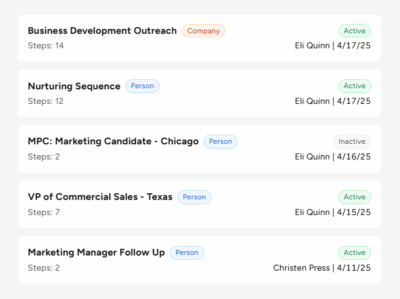How good are your recruiting skills? Filling a job order doesn’t necessarily mean you add true value to your client’s company. To improve your process, you need to know the value of new hires. Instead of making educated guesses, calculate the cost and value of new hires.
Measuring human capital shows your clients how valuable your recruiting services are. Learn how to calculate your candidate placement’s return on human capital investment. Then, you can show your clients your true, measurable value.
Human capital measurement
First, you need to understand the importance of human capital and measuring it. Human capital includes all of the skills, knowledge, and experience an employee adds to a company.
When a company hires an employee, they invest in them by hiring recruiters, training, offering attractive compensation packages, providing raises, and more. In return, an employee is expected to add value to a business by easing the workload and bringing in more revenue, either directly or indirectly.
Knowing how to measure human capital helps you show clients the value of their investments. When clients understand the value your recruiting services offer, you’re more likely to get repeat business from them.
There are a few different ways you can measure human capital. You can measure things like the cost of employee turnover and how much your client spends training each new hire. But if you want to know how to calculate the return on human capital in dollar amounts, use the ROI formula.
Human capital ROI formula
Learning how to calculate human capital can really highlight the long-term benefits of your recruiting services. With this hard data, your client can see the dollar value of their new hire.
Return on investment (ROI) measures how much you gain or lose on an investment compared to what you invested. Return on human capital investment shows your client how much their company earns compared to how much they spend on employees.
You can find ROI monthly, semi-annually, or annually. They should compare their ROI results before and after adding new employees to their payroll. ROI is a percentage or decimal.
Here is the human capital ROI formula:
Human Capital ROI = (Revenue – Operating Expenses – Employee Compensation) / Employee Compensation
Example
Let’s say you want to find your client’s human capital ROI. Their company earned $90,000 in December and had operating expenses of $50,000. They paid their employees a total of $20,000 in wages and $5,000 in benefits for a total of $25,000 in employee compensation.
The human capital ROI formula for December would look like this:
($90,000 – $50,000 – $25,000) / $25,000 = 0.6
Your client’s human capital ROI is 0.6, or 60% in December, which means that you had a return of 60% of each dollar invested in your employees. The higher the number, the better the ROI.
Now, let’s say your client wants to compare their ROI before they hired your candidate to their rate after hiring the candidate.
In January, before your placed your candidate, your client’s ROI was 0.25. That means they earned a return of $0.25 or 25% for every $1.00 invested. After hiring your candidate, your client’s ROI is 60%. Your client’s ROI is higher after hiring your candidate.
What to do about poor human capital measurements
So, what do you do if your client’s human capital measurements indicate financial loss? There are a few reasons for a low ROI.
If your client measures their return on investment right after hiring, there might not be time for the candidate to bring in more revenue. There could also be a low ROI because your client’s company’s revenue is decreasing.
If the new hire is not a good fit, your client could end up getting a poor return on investment. This could lead to employee turnover.
To avoid these types of situations, it’s important to amp up your recruiting process. When you receive applications, you need to weed out candidates who wouldn’t be a good fit before passing their information on to your client. Use recruiting software with a built in ATS (applicant tracking system) to organize and track candidates in the process.
Make sure you put candidates through multiple rounds of interviews. Take notes, use a job-fit test, and contact previous employers. By implementing these strategies, you can help improve your clients’ human capital ROIs and show the value of your recruiting services.









